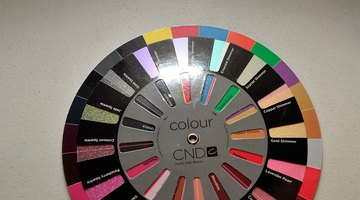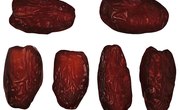The color wheel is a tool that illustrates how colors are organized, blended and used. Colors wheels are used by artists and scientists. In fact, the first color wheel was invented by a scientist. Isaac Newton is credited with the invention of the first color circle, the forerunner of the color wheels used today.
Re-Inventing the Wheel
Isaac Newton is perhaps best known for his theories on gravity and the laws of motion, but he was also the first to realize that light -- which moves in a wave -- is composed of individual waves, each with its own color. In 1666, he did not really believe in the accepted theory at the time -- that colors were a result of the blend of light and dark -- so he set out to perform his own investigation. In a dark room, Newton placed a prism in front of a thin beam of light, and created a rainbow of colors, demonstrating that white light is composed of many colors. To illustrate this, he created a color wheel. Newton's wheel contained the seven colors in the rainbow: red, orange, yellow, green, blue, indigo, violet. When the colors merge together, they appear white.
Refining the Wheel
Other scholars also began to study color. Johann Wolfgang von Goethe was a German writer best known for his drama Faust. He was also interested in the natural world and wrote many treatises on scientific topics. In 1791, Goethe became fascinated with Newton's theory of color and set out to refine and surpass it. In 1810 he published "Theory of Colors" in which he introduced a color wheel that featured both primary and secondary colors. In his work, he also identified colors according to the emotions they evoke.
Defining the Wheel
Newton's color circle was widely accepted and used to theorize how colors blend to create other colors, but they were just that -- theories. Finally in 1855, James Clerk Maxwell, a very prominent 19th-century physicist, defined red, yellow and blue as the three primary colors from which all other colors could be created. This gave credibility to the placement of the colors on the wheel. Maxwell continued to study how light, electricity and magnetism are related and is credited with founding the study of electromagnetism.
About the Wheel
Basic color wheels are arranged so that the primary colors are opposite their complimentary colors. This means that blue and orange are directly opposite each other on the circle. Then, all of the colors that blue and yellow create when they are overlapped are between them on the wheel; usually arranged in the order of their wavelengths. This overlapping is called additive mixing. The individual colors represented by each wavelength are called spectral colors. Color wheels vary widely from Newton's basic seven-color circle to elaborate wheels that contain hundreds of colors. Color wheels are primarily usually used to create color harmony, which can be created by using several different combinations of colors. Some of the most popular combinations use analogous colors (next to each other on the wheel), and complimentary colors (opposite each other on the wheel).











